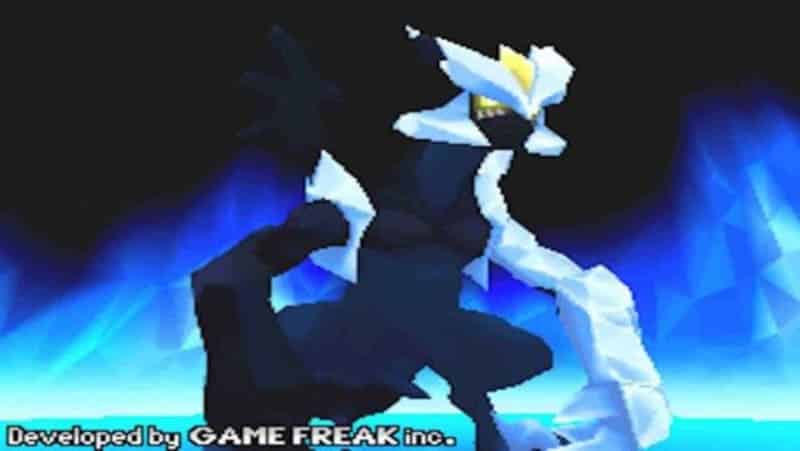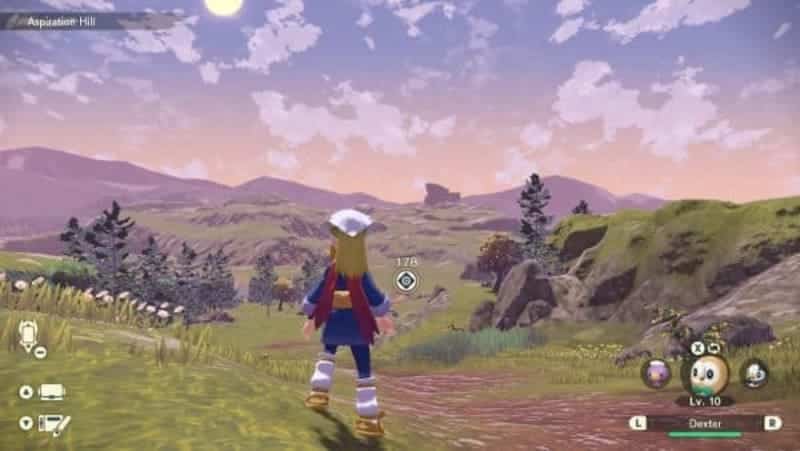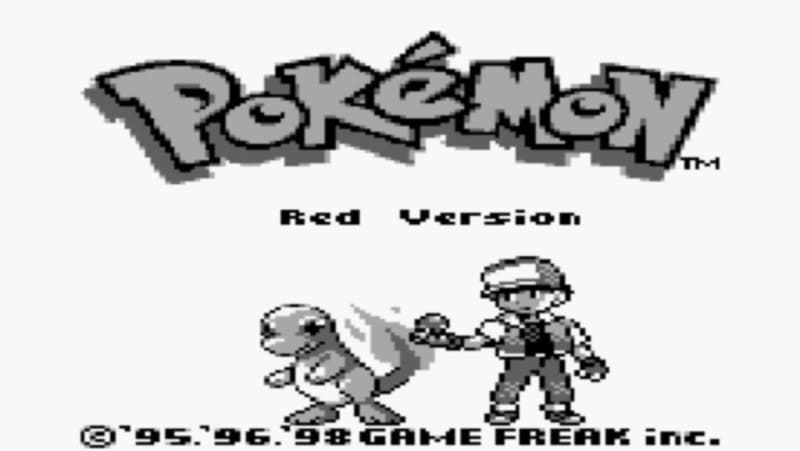Since February 27, 1996, Nintendo’s Pokemon games have been releasing and filling the hearts of players in Japan, in 1998 the United States joined the fun with Gen I of Pokemon being Red and Blue. Since then, Pokemon has been steadily rising to fame and eventually taking over the world with its pocket monsters
From the Gameboy to the modern Nintendo Switch, Pokemon has released tons of games. Here, is where we will dive into the history and look at Nintendo’s iconic Pokemon Games and their Generations released so far.
Gameplay of Pokemon
No matter the game you play it starts the same: you awaken to your professor asking you what your name is and (depending on the entry you are playing) you will even get character customization that will allow you to make the character feel closer to what you want. Once you enter the world, you are greeted by your mother and are sent to find yourself in trouble with Pokemon as you try to explore.
Upon either being stopped from exploring by the professor, saving the professor, or even being told to see the professor, you are introduced to three starter Pokemon. As you pick one you will be given it for the rest of your Pokemon game, a rival will appear and choose the one opposing starter that would be able to take yours down; so if you took grass, your rival will pick fire and vice versa.
Then you set off on an adventure to go and explore the Pokemon world, collecting badges or totems to achieve the goal of beating the Elite Four and becoming the Pokemon Champion. The Pokemon games as a whole revolve around the RPG genre, picking out your monsters, and training them to learn new moves and new some even gaining new types to mix up the type chart. Speaking of Type Charts, Pokemon revolves around 17 different types that have different matches up to make a move either super effective or not very effective, or even straight-up neutral damage.
Fanmade Pokemon Challenges
Before I head into the generations, I want to mention a type of “gameplay” or challenge that fans have made for themselves. It’s called a “Nuzlocke.” The Nuzlocke is a special type of challenge for more hardcore Pokemon fans. The rules are simple and they tend to evolve depending on if you decide to turn up the difficulty. The rules go like this: You can capture one Pokemon per “route” or “encounter” If you fail to capture the encounter then that’s it, the encounter is forfeited. If any Pokemon faints, it’s considered dead and you must put them in the PC’s “Death box” or release them back into the wild.
These are the basics but again, more rules and harder restrictions are also available. By no means is this something you HAVE to do to enjoy Pokemon, many others have tried and failed (mainly me) in these challenges but they are a good way of learning the mons and their weaknesses and strengths, it gives a natural PvE challenge for those who don’t want to do competitive PvP.
Shiny Pokemon
Gen II is where “Shiny” Pokemon started to appear in Pokemon History. Shiny Pokemon is where they have a different color plate than usual. A Shiny Pikachu will be a darker, sunburnt color than the original. A Shiny Eevee will be lighter and a more white fur all around than the usual brown. Or everyone’s favorite Shiny Charizard will be Black and Red instead of the usual Orange and Green.
Gen II was the first game where you were GUARANTEED a Shiny when you went to Lake Valor and heard the rumors of a weird-looking Gyarados, only to go and investigate and it’s a Shiny Red Gyarados from its usual blue. However, the same mon can be found in the faithful remake Heartgold and Soulsilver.
Several other games have guaranteed shinies, like Dratini in White 2 and Gible in Black 2, along with a Haxorus after completing the Pokedex. In Pokemon Legends Arceus you get a quest to go and look for a weird-looking Ponyta and it’s a Shiny. Shiny odds vary in the Pokemon Games with the odds being as low as 1 in 4096, depending on the game you play, like Arceus or Violet and Scarlett, you can increase your odds by doing mass outbreaks and farming them since they spawn multiple the same mons.
Once you complete the Pokedex in their respective Pokemon game, you usually get a shiny charm with decreases the odds by almost half.
Generation I
Generation I of Pokemon was the start of the series, these were the original and the beginning of a long series. As it was mentioned above, the first couple of Pokemon games were released in Japan on February 27th, 1996, This was the first Gen, Pokemon Green and Red, Representing Vensaur and Charizard on their covers. In 1998, They brought it over to the USA but as Red and Blue, showing off Blastoise instead of Vensaur. These games were released on the Game Boy.
Eventually Pokemon Yellow joined the roster and Pikachu became the mascot of the Yellow series giving players a newer choice of being able to choose only Pikachu but able to obtain the starters from varying other trainers throughout the game. Gen I introduces the Kanto region, the first in many, and the starting count of 151 Pokemon and the Pokedex that is used to register the caught Pokemon and gives the players a reason to complete it all.
Yellow was the start of the game releasing another game with the core series. Where the games add a twist to their original, going forward for several generations sometimes even improving the game.
Generation II
Gen II introduced the Johto Region and expanded the Pokemon by 100 new species as well as a new Dark and Steel type. This generation brought Gold and Silver on November 21, 1999, and Crystal, following behind it in December 14, 2000, to the world with quality of life updates such as the night and day system, and new evolutions for the time system. It updated the game to have color now that it was on the Gameboy Color. It brought in breeding and introduced a system of holding items that would help out Pokemon and their trainers in the long run.
Like every game going forward, they introduced three new starters with the expanding roster of monsters, but unlike the rest, you can’t find the old expansions of rosters. It wouldn’t be until a few generations in the future you can trade from older games to the newer ones to get most of the roster.
Generation III
Gen III introduced the Hoenn Region with the help of Pokemon Ruby and Sapphire in 2002, and Emerald in 2005 on the Gameboy Advance. Expanding the roster by 135 new Pokemon being the series up to 386 Pokemon. More quality-of-life updates come out as an update to the environment, introducements to Pokemon “natures” that can influence stats by decreasing and increasing a couple of them, it introduces abilities and a 2 v 2 battle system. While it was introduced in Crystal, Gen III allows you officially to choose between genders.
This was the first game to introduce Secret Bases, these bases were allowed to be made in certain locations using Secret Power. The bases allowed you to create rooms that you could customize with furniture and make into well, a secret base, while it was taken away later it was fun to have and customize for a bit. Along with customizations, they brought in Contests, this is where you can take your favorite mons and show them off and their “beauty” to earn ribbons for them.
Generation IV
The Fourth Generation was introduced with Pokemon Diamond and Pearl and its secondary release Platinum in the USA in March 2010, which gave us the Sinnoh region and another 107 species of Pokemon, 3 new starters, and more quality-of-life updates. Diamond and Pearl was the first Pokemon game on the Nintendo DS. This was the first generation to introduce a 3D style to its art style. Gen IV introduces the attack move categories: Special and Physical. It was the first time when hardcore players had to consider, the difference in damage, if it’s physical it’s reduced by Defense, and if it’s special it is reduced by Special Defense. As well as being enhanced by Attack and Special Attack.
It introduced the underground which upgraded Gen III’s Secret Bases and allows you to build a base underground all the while digging up fossils and items. It also brings multiplayer so you can visit each other bases underground and see each other.
Generation V

Generation V welcomed Pokemon Black and White, as well as their re-releases. This game introduced the Unova region to the world. They were released on the Nintendo DS. This introduced some new systems such as the triple battle system and rotation battles. They introduced C-gear which actively connects to the internet to get updates. It introduced 156 Pokemon to the roster. This was the first in the generations to break the series adding in a third game to the core series.
Generation VI and VII
On October 12, 2013, Pokemon X and Y was introduced to the world on the Nintendo 3DS, making it the first official 3D Pokemon game. The game introduced 72 new Pokemon, introduced the fairy type, the famous Mega Evolution, and the Kalos Region. Mega Evolution was one of the turning points in the Pokemon series where a selected number of mons gained the ability to change their form into a stronger version. This form would change the type for some of the mons or add a new type to their original. It shaked up competitive play and even made for more challenging nuzlockes.
This was the generation where Eevee‘s most recent evolution, Sylveon, was introduced.
This was the first Generation that introduced the Pokemon Bank. The Pokemon Bank changed the way trainers can store Pokemon through their games and are eventually able to trade them between later gens eventually bringing the ability to grab from older games.
This generation brought remakes of Sapphire and Ruby as Alpha Sapphire and Omega Ruby, bringing new mega evolutions and the original story of the Hoenn region to the modern era.
Greninja was given the spotlight treatment from the Pokemon Games and was brought to Super Smash Bros. on the Nintendo DS and Wii U.
While it wasn’t in the Generation, in July 2016, Pokemon Go was introduced as an augmented reality game where you can physically walk around your town, park, or even when you travel to find Pokemon in the real world and catch them for battle in gyms or transfer to the Pokemon Bank later on.
Generation VII introduced Sun and Moon, as well as Ultra Sun and Ultra Moon. It was the first to introduce region forms. It brought in 88 new Pokemon and different regional forms called Alolan forms. Here is where you fought totem mons to clear the totem challenge and progress to the Elite Four. Generation VII also introduced remasted Pokemon Games of the Kanto Region: Let’s Go Pikachu and Let’s Go Eevee. These games while again, remasted versions, gave people a new experience with Eevee and Pikachu being starters.
Generation VIII
Introduced Pokemon Sword and Shield. These brought the Pokemon Games to the Nintendo Switch in 2019. SnS introduced 81 new mons and 13 new Glaraian forms, carrying the tradition of regional forms. This game was made fully 3D and was the first of the games to introduce DLCs to the game with The Isle of Armor and The Crown Tundra. This was one of the first ever games to introduce Pokemon in the world. Where you can see the mons out of the grass and run into them.
This game took on a feeling of English Football as you fought in stadium-like gyms. This was a good thing because they introduced Dynamax, this was this generation’s gimmick, as they removed Mega Evolutions. Dynamax is where the Pokemon will increase their size to a tower, or stadium, size mon. There was a good amount of fan favorites where they would get unique forms like Charizard, Blastoise, and Venasaur. It also introduces Raids, where four trainers, friends, or AIs can go into raid dens and fight dynamax Pokemon and attempt to capture it at the end after fighting it with conditions.
Pokemon Legends: Arceus

This Generation also introduces Legend of Arceus, It’s one of my favorites in the series, and while it had its own criticism before it was released, it was greeted with good responses. Legends: Arceus is a new spin on the Pokemon Games where you physically hunt the Pokemons as you are back in time in the Sinnoh Region. Here all the Pokemon are only in the overworld. Here you would have to sneak, bait, and throw balls to catch the Pokemon. It introduced Alphas which were larger and more aggressive mons.
This Generation made a change to the Pokemon style that we were used to, introducing live battles where you can move around and view different sides of the battle (Even get in the way of them and get hit by them, animation-wise.) Moves were introduced quickly and a power style that can alter a move’s ability, Abilities were removed too, and status conditions were changed, where sleep is now drowsy and frozen is frostbite. The turn order was affected by speed and now could be abused to go multiple times in a row.
This game introduced so many new styles that I can’t wait to see more in the newer Pokemon Legends: Z-A. I hope to see this as a series continuing as it was a breath of fresh air to a repetitive style that Pokemon has grown used to.
Generation IX
This is the current Generation of Pokemon Games. This introduced Pokemon Scarlet and Violet on November 18, 2022. It also eventually releases two DLCs; Part One, The Teal Mask, and Part Two, The Indigo Disk. This generation added 120 Mons to the roster and more as the year went on, through the game’s gimmick Tera Raids. These are their versions of Raids from Sword and Shield, where you can fight Pokemon using Terra moves and forms. Tera forms were the other side of the game’s gimmicks where you can alter a Pokemon’s type and give it new forms of moves and styles.
Scarlet and Violet was a very rocky start to the new generation, to say the least, and most players would agree it was plagued with horrible bugs and was the worst entry to the series just for the fact that it shows how truly limited the switch is. I enjoyed it for what it was but its has its issues that hopefully its predecessors won’t suffer as well.
A new game was announced on February 27th, 2024 as Pokemon Legends: Z-A. It will allow trainers to return to Lumiose City from the Kalos region seen in X and Y.


